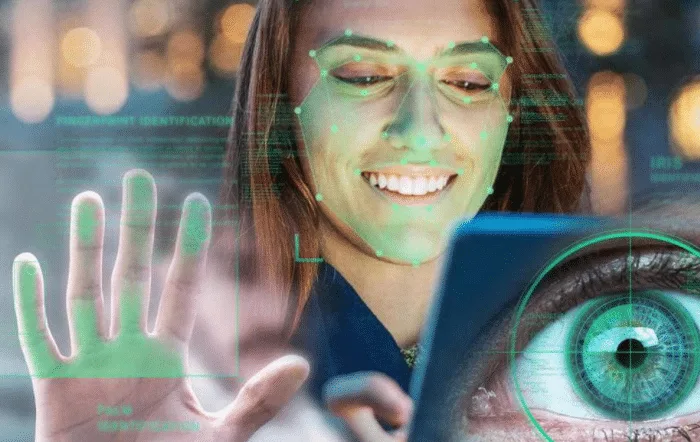It is generally accepted that the development of modern technologies improves and facilitates human life. However, it also marks the beginning of an era of widespread surveillance, from which no one can hide. There are many different reasons for implementing such systems — and we will tell you all about them. Also, we will try to compare the pros and cons of these innovations.
Why Is Surveillance So Relevant Now?
Many countries are actively engaged in the development of biometric databases. The United States, India, and China are prime examples in this area. Stephanie Schuckers, an American expert on biometric methods of computer security, states:
“When it comes to crimes, terrorism, we focus on the individual. And this must be done if we want to fight crime or terrorism. And biometrics is one of the ways to connect people with any presented data about them.”
Now the main working tools are the face detection systems and equipment which scans the iris. However, scientists are already developing new technology that can identify anyone from a much greater distance (more than 1-5 meters). If the specialists succeed in this, then authorities will be able to recognize people by:
- the shape of their ears;
- the rhythm of their heartbeat;
- their gait;
- their smell, etc.
We are already facing surveillance regularly. However, it doesn’t always involve biometrics. A team of researchers (Gizmodo Survey) found that some smartphone apps shared information used by the phone’s owner. Details of the experiment:
- during the review, more than 17,000 of the most popular programs were tested;
- none of them was able to turn on the microphone for wiretapping or get the information from biometric sensors (face ID and fingerprint);
- some applications recorded the screen image and sent it to analytical companies.
Thus, biometrics are not always used for surveillance, although the technology is becoming more popular all the time.
Risks of Using BI Surveillance: The Main Disadvantages
Let’s talk about the risks and disadvantages by using a specific example. Interestingly, back in 2009, India’s government created a database containing lots of biometric data on its citizens in the form of a unique personal number (the AADHAAR system). It is the world’s largest BI database. It already contains data on more than 1.2 billion citizens, including their:
- fingerprints;
- iris scans;
- facial recognition images.
The system is used to access social and banking transactions (payment of pensions, opening accounts, school meals, etc.). Nevertheless, over the past decade, the active use of such a system has faced three global problems at once:
- Massive data leakages. These are not such rare events for government agencies due to the high level of interest in this kind of information among cybercriminals.
- Theft and substitution of individual citizens` data (personal and biometric information).
- Citizens’ IDs and problems accessing their benefits. For example, the fingerprint may be distorted as a result of certain work activities. Also, facial features can change. The AADHAAR system itself has already faced similar problems due to some bugs — thus, hundreds of residents could not get the services they were entitled to.
In general, such systems’ creation must be accompanied by a thorough risk analysis and elaboration of protection measures. This is the only way the owners of biometric information can be safe.
Pros: What Is Good About BI Surveillance?
The world is on the verge of a technological revolution. It is facilitated by creating 5G network coverage, the large-scale expansion of the IoT world, and the expansion of humanity’s experimental parameters. So, are there any advantages to this kind of innovation? Definitely! Biometric surveillance will achieve the following results:
- Reducing the incidence of terrorism. Criminals seldom act alone; most often, they need to interact with each other. Telephones (even public ones) will be able to track them by voice, city security cameras — by external signs, and so on.
- Simplifying data management. You probably won’t have to remember passwords from bank cards or profiles on social networks. Access will be provided exclusively using biometric data (face geometry — 2D or 3D, fingerprints, hand thermography, voice, handwriting, and emotion recognition).
- Increasing ability to find children and other family members. On the one hand, this can be regarded as a violation of personal space. On the other hand, it will help reduce kidnapping and missing people cases.
As you can see, surveillance systems are not a totally evil technology that prevents us from living freely. Such innovations can also reduce crime rates through the availability of a fully-fledged biometric database.
Final Thoughts
Surveillance systems are part of our lives, but countries don’t implement them on a mandatory basis. Such technology is simply arousing widespread interest and is being actively researched for subsequent use (mainly forensic science).
Thus, for now, you have every right to restrict access to your biometric and other data. Be sure to read the rules for using any applications that you install on your devices. It will prevent sharing information (even if it is necessary for the analytical company and not for government departments).
If used correctly, biometric surveillance can do something previously impossible. It will be possible to define the identity of a person quickly. For example, identifying a corpse without moral trauma to relatives or searching for a criminal who only appeared on cameras will be possible.





